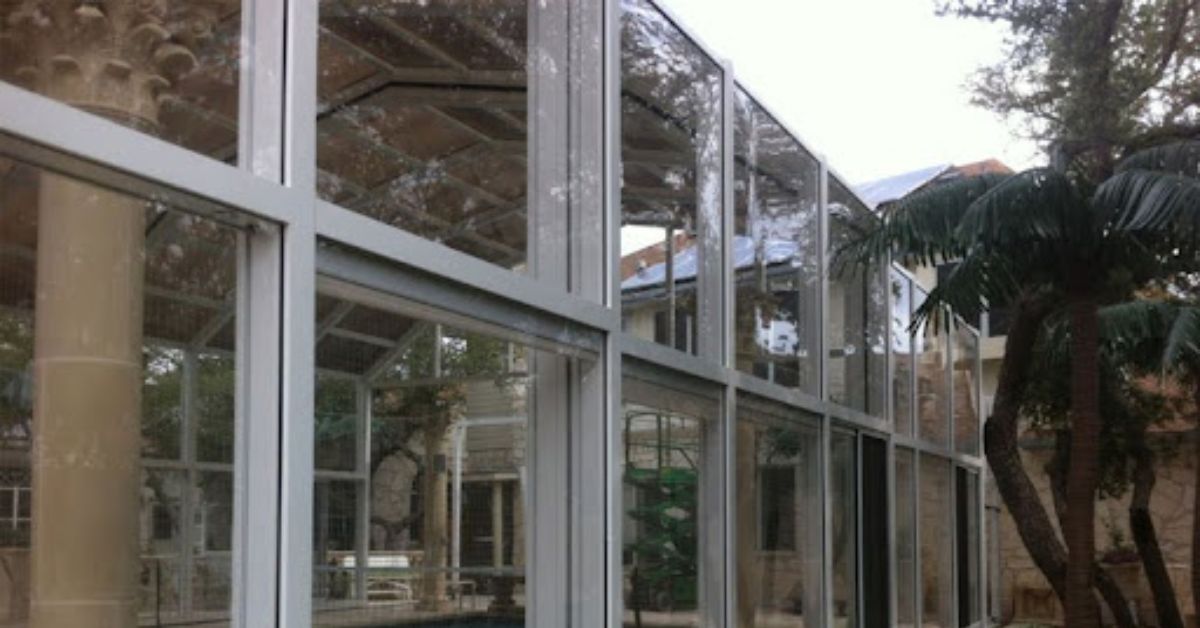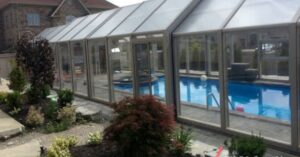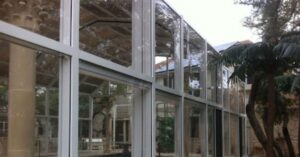HOME IMPROVEMENT
Why Routine Roof Inspections Are Essential for Every Homeowner

When it comes to home maintenance, the roof is one of the most important yet often overlooked areas. It protects the home from the elements, insulates against temperature extremes, and contributes to the overall structural integrity of the property. Despite its crucial role, many homeowners neglect regular roof inspections until a significant problem arises.
Routine roof inspections are essential for identifying potential issues before they turn into costly repairs or major structural damage. By staying on top of roof maintenance, homeowners can extend the lifespan of their roof, prevent leaks, and ensure the safety of their home. In this article, we’ll explore the importance of regular roof inspections and why partnering with a reliable roofing company is key to maintaining a secure and functional home.
- Identifying Minor Issues Before They Become Major Problems
One of the primary benefits of routine roof inspections is the ability to catch minor issues early. Roofs are constantly exposed to weather conditions, such as rain, wind, snow, and heat, which can gradually wear down materials and cause damage. Without regular inspections, small problems like cracked shingles or loose flashing can go unnoticed, eventually leading to more significant issues such as leaks, water damage, or mold growth.
Common Roof Issues Found During Inspections
- Damaged Shingles: Shingles can crack, curl, or lose granules over time, especially after extreme weather events. Inspectors can spot these issues early and recommend repairs or replacements before the damage spreads.
- Flashing Problems: Flashing is the material used to seal joints and prevent water from seeping into the roof. Damaged or improperly installed flashing can lead to leaks around chimneys, vents, and skylights.
- Gutter Blockages: While gutters may not be part of the roof itself, they play a critical role in directing water away from the home. During inspections, roofing professionals can check for clogged or damaged gutters that could lead to water buildup and potential roof damage.
- Moisture and Mold: Any signs of moisture, water stains, or mold in the attic are red flags that should be addressed immediately. Roof inspections help identify the source of the moisture and provide solutions to prevent further damage.
By addressing these minor issues during routine inspections, homeowners can avoid the need for costly emergency repairs or even a full roof replacement down the line.
- Extending the Lifespan of Your Roof
A well-maintained roof can last for decades, but neglecting regular maintenance can significantly shorten its lifespan. Routine roof inspections allow homeowners to maximize the durability and longevity of their roof by ensuring that it remains in good condition over time. With proper care, many roofs can last well beyond their expected lifespan, saving homeowners the expense of premature replacement.
How Regular Inspections Protect Your Investment
- Proactive Maintenance: Just like any other part of your home, roofs require regular care to function properly. Inspections provide an opportunity to identify wear and tear, fix minor problems, and perform necessary maintenance that keeps the roof in optimal condition.
- Preventing Structural Damage: Water infiltration is one of the most common causes of major roof damage. Routine inspections help prevent leaks, ensuring that water is properly directed away from the roof and home. This protects both the roof structure and the home’s foundation from water damage.
- Optimizing Roof Performance: A well-maintained roof does more than protect against the weather. It also contributes to energy efficiency by providing insulation and reducing heat loss. Regular inspections ensure that the roof is functioning as it should, helping to maintain a comfortable indoor temperature and lower energy bills.
By investing in regular inspections, homeowners can protect the integrity of their roof and avoid the high costs associated with premature deterioration.
- Enhancing Safety for Your Home and Family
Beyond financial savings, regular roof inspections play a crucial role in maintaining the safety of your home. Roof damage, if left untreated, can lead to dangerous situations that put the structural integrity of the house at risk and compromise the safety of the occupants.
Safety Risks Associated with Roof Damage
- Structural Instability: Over time, minor roof issues like leaks or damaged shingles can weaken the roof’s structure. In severe cases, this can lead to partial collapses or sagging, endangering the safety of the home’s residents.
- Fire Hazards: Moisture infiltration can affect electrical systems in the attic or ceiling, increasing the risk of electrical fires. Regular roof inspections help identify water damage before it can lead to such hazards.
- Pest Infestations: Roof damage, such as cracks or holes, can provide entry points for pests like rodents, birds, or insects. These unwanted visitors can cause further damage and pose health risks. Inspections help detect and seal potential entry points before pests become an issue.
Ensuring that the roof is structurally sound and well-maintained gives homeowners peace of mind, knowing that their home and family are protected from potential hazards.
- Avoiding Expensive Emergency Repairs
Emergency roof repairs can be stressful, expensive, and disruptive. Waiting until a problem becomes severe often results in higher repair costs, as well as additional damage to other parts of the home. For instance, a small leak left unattended can damage ceilings, walls, insulation, and even electrical systems.
The Financial Benefits of Preventative Maintenance
- Lower Repair Costs: Routine inspections allow homeowners to address issues early, preventing small problems from escalating into larger, more expensive ones. Minor repairs, such as replacing a few shingles or fixing flashing, are much less costly than major repairs caused by extensive water damage or structural issues.
- Preserving Home Value: A well-maintained roof contributes to the overall value of a home. When it comes time to sell, potential buyers are likely to view a home with a recent roof inspection report as more appealing. Conversely, a neglected roof can decrease property value and deter buyers.
- Reducing Insurance Claims: Many home insurance policies require regular roof maintenance to remain valid. By scheduling routine inspections, homeowners can avoid potential issues with their insurance claims and minimize out-of-pocket expenses for roof repairs.
By taking a proactive approach to roof care, homeowners can save money in the long run and avoid the hassle of emergency repairs.
- Preparing for Weather Changes and Seasonal Challenges
Roof damage often becomes more apparent during extreme weather conditions, such as heavy rain, snow, or wind. Routine roof inspections are especially important before and after harsh weather seasons to ensure that the roof can withstand the elements and is free from damage.
Seasonal Roof Maintenance Tips
- Pre-Winter Inspections: Before winter sets in, it’s essential to check for any weak spots or damage that could be worsened by snow or ice buildup. Ensuring that the roof is in good condition before the colder months can help prevent leaks, ice dams, and additional stress on the structure.
- Post-Storm Inspections: After severe weather, it’s important to assess the roof for any damage caused by high winds, hail, or debris. Even if the roof appears intact from the ground, professional roofing contractors can identify hidden damage that may lead to problems in the future.
By staying ahead of seasonal challenges, homeowners can ensure their roof remains in top condition year-round.
Conclusion: Protect Your Home with Routine Roof Inspections
Regular roof inspections are an essential part of home maintenance, providing long-term benefits that go beyond simply preventing leaks. From extending the life of your roof to ensuring the safety of your home and family, inspections offer a proactive approach to maintaining one of your home’s most important features.
Working with experienced roofing companies like Sunrise Remodelers ensures that your roof receives the care and attention it needs to stay in optimal condition. By scheduling routine inspections and addressing issues early, homeowners can protect their investment and enjoy peace of mind knowing their roof is built to last.
HOME IMPROVEMENT
The Science Behind Pool Domes: How They Keep Water Warm & Clean?

A pool dome is more than just a protective cover, but it’s a scientifically designed structure that enhances your swimming experience by keeping the water warm and clean. Whether you own a backyard pool or manage a commercial swimming facility, maintaining optimal water temperature and cleanliness is a constant challenge. Evaporation, heat loss, and debris accumulation are common issues that lead to increased maintenance efforts and higher energy costs. Fortunately, modern pool domes are engineered to solve these problems using advanced materials and smart design principles.
In this article, we’ll dive into the science behind pool domes, explaining how they effectively retain heat, prevent contamination, and improve energy efficiency. Ultimately making them a must-have addition for pool owners.

How Pool Domes Trap Heat?
Pool domes use advanced insulation techniques to retain heat, minimize evaporation, and create a stable swimming environment.
1. The Greenhouse Effect
Pool dome functions similarly to a greenhouse. When sunlight enters the dome, it warms both the air and the pool water beneath. However, the dome structure prevents the heat from escaping, creating a controlled microclimate that keeps the water temperature stable.
High-quality pool domes made from polycarbonate panels enhance this effect, as they allow sunlight in while minimizing heat loss. The result? A naturally warmer pool without excessive heating costs.
2. Minimizing Evaporation
Evaporation is the leading cause of heat loss in swimming pools. Without a dome, water constantly evaporates, carrying heat away with it. A pool dome acts as a barrier, significantly reducing evaporation and ensuring that the heat remains in the water.
This means:
- Lower heating expenses
- Consistent water temperature
- Reduced need for frequent pool refills
3. Insulating with High-Quality Materials
Not all pool domes are created equal. Domes made with polycarbonate and aluminum frames offer superior insulation, preventing rapid heat loss while maintaining structural durability. Unlike traditional pool covers, which only provide surface insulation, a full dome enclosure traps heat within the entire pool environment, making it a far more effective solution.
How Pool Domes Prevent Water Contamination?
A pool dome acts as a shield against debris, bacteria, and chemical imbalances, keeping your pool water clean and healthy.
1. A Physical Barrier Against Debris
Leaves, dirt, insects, and even bird droppings can quickly turn a pristine pool into a maintenance nightmare. A pool dome acts as a shield, keeping unwanted debris out. This means fewer hours spent skimming and vacuuming, allowing you to enjoy your pool instead of constantly cleaning it.
2. Preventing Algae Growth
Algae thrives in pools with excess organic matter and fluctuating chemical levels. Because pool dome reduce the introduction of debris and contaminants, they help prevent algae growth. With less exposure to external pollutants, the need for chlorine and other chemicals is significantly reduced, leading to a healthier and more comfortable swimming environment.
3. Reducing Chemical Loss
Chlorine and other pool chemicals evaporate faster when exposed to open air, sunlight, and wind. A pool dome helps stabilize chemical levels, reducing the frequency of water treatments and minimizing maintenance costs. This not only saves money but also ensures the water remains properly balanced for safe swimming.

Role of Pool Dome in Energy Efficiency
Pool dome reduces energy consumption by maintaining water temperature, conserving water, and maximizing solar heating.
1. Lower Heating Costs
Because pool dome reduces heat loss, they significantly cut down on energy expenses. Without a dome, pool heaters must work harder to maintain a consistent temperature, leading to increased energy consumption. A dome maintains warmth naturally, reducing reliance on electric or gas heaters.
2. Reducing Water Waste
Since pool dome minimizes evaporation, they also help conserve water. Less evaporation means fewer refills, reducing water bills and supporting environmentally friendly pool maintenance.
3. Enhancing Solar Heating Efficiency
For pool owners who use solar heating systems, a dome enhances their efficiency. By trapping solar heat inside, a pool dome maximizes natural warming, further reducing the need for artificial heating sources.
Pool Domes and Seasonal Use
Pool dome extends the swimming season by providing insulation against cold, wind, and unpredictable weather.
1. Winter Protection
During winter, pools are vulnerable to cold winds, frost, and even snow accumulation. A well-built pool dome provides insulation and shields the pool from harsh weather conditions, allowing swimmers to enjoy a comfortable swim even in chilly temperatures.
2. Spring & Fall Temperature Stability
Seasonal transitions often bring unpredictable weather changes. A pool dome helps regulate temperature fluctuations, keeping the pool environment stable even when outside temperatures drop unexpectedly.
3. Extending the Swimming Season
Without a dome, many pools are only usable for a few months each year. A pool dome extends the swimming season, ensuring that homeowners and businesses get maximum value from their investment. Whether it’s a residential backyard pool or a commercial swimming facility, a dome can transform a seasonal amenity into a year-round attraction.
Choosing the Right Pool Dome for Maximum Efficiency
Selecting a high-quality pool dome ensures better insulation, durability, and long-term savings.
1. Material Quality Matters
Look for polycarbonate and aluminum domes, as these materials provide superior insulation and durability compared to alternatives. Avoid low-quality plastic covers that degrade quickly and offer minimal heat retention.
2. Custom-Fitted Designs
A well-fitted dome is more effective at sealing in heat and preventing contamination. Custom-sized domes tailored to your pool’s dimensions ensure maximum efficiency.
3. Ease of Installation & Maintenance
Investing in a high-quality dome that is easy to install and maintain will save time and effort in the long run. Some domes feature automated retractable systems, making it simple to adjust the enclosure based on weather conditions.
Why Covers in Play Offers the Best Pool Dome Solutions?
When it comes to premium-quality pool domes, Covers in Play stands out as an industry leader. Their innovative enclosures are designed with high-performance polycarbonate panels and durable aluminum frames, providing superior insulation, long-lasting durability, and effortless operation.
Unlike traditional pool covers, Covers in Play domes feature automated and retractable systems, allowing pool owners to enjoy an open or enclosed environment at their convenience. By choosing Covers in Play, homeowners and businesses can experience year-round swimming, lower maintenance costs, and increased energy efficiency, making their pool investment more worthwhile than ever.
Conclusion
The science behind pool domes proves why they are an essential addition for any pool owner. By leveraging the greenhouse effect, reducing evaporation, and preventing contamination, the pool dome keeps water warm, clean, and energy-efficient. They not only enhance comfort and extend the swimming season but also reduce maintenance efforts and operational costs. Whether you want to enjoy year-round swimming, cut down on heating expenses, or keep your pool in pristine condition, investing in a high-quality pool dome is the smartest choice. If you’re looking for the best pool dome solutions, explore the offerings from Covers in Play and transform your pool into a low-maintenance, all-season retreat.
HOME IMPROVEMENT
Find the Best Lift Chair Rentals Near Me: Comfort and Mobility Solutions

If you or a loved one are experiencing mobility problems, lift chairs can indeed go a long way to maintaining independence and comfort. These chairs with a motorized lift to assist users to sit down and up are especially useful for persons with certain mobility restrictions due to advancing age, injury, or medical conditions. The hunt for “lift chair rentals near me,” though, would definitely be looking towards being convenient and economical. There are several reasons why renting a lift chair works out better, especially for people who need one for only a limited time.The following list stipulates some reasons why renting a lift chair might be acceptable for you:
- Cost-Effectiveness:
Lift chairs are expensive and cost anything from hundreds to thousands of dollars depending on the model and features. Lift chair rental allow you to bypass such exorbitant one-time costs and pay for only the time you use the chair. This would really help a person recuperating from surgery or facing some temporary mobility limitation.
- Flexibility:
Renting offers a fairly good amount of flexibility. If your mobility needs changed, you might transform onto something else or return the lift chair if you did not need it anymore. Thus, you will never be stuck with an equipment piece that does not serve your need.
- Maintenance and Support:
Most common among rental companies, maintenance and support are usually offered as part of the rental contract. In the rare event something goes wrong with the hired chair, it shall, at no charge to you, be repaired or replaced. By doing so, you ensure to never be left alone with such support.
- Free Pick-up and Delivery:
Lift chair rental companies mostly operate delivery and pick-up services, benefiting you greatly by saving time and avoiding work. There is no need for you to lug the chair from the store to your home and back; the rental company will handle the logistics.
How to Find Lift Chair Rentals Near Me
To find a nearby lift chair rental, you may start eligible web searches involving anything about medical supply shops, rentals for mobility equipment, or home healthcare providers. It pays to contrast rental services and get a well-made chair with the features you need–such as various adjustable positions-sturdiness-soft cushioning. Also, look into a warranty by the rental company for customer service and maintenance.
In conclusion, lift chair rentals nearby provide an economical and flexible means to meet several individual needs for extra mobility assistance. Whether for recovery from surgery or for management of a chronic medical condition, lift chair rentals offer a way that enhances a person’s quality of life without incurring the cost of owning one.
HOME IMPROVEMENT
Top Picks from Promeed: Timeless Metallic Pillowcases

Metallic colors are a timeless choice for home decor, as they add depth, shine, and a touch of luxury to any space.
When it comes to bedding, incorporating a mulberry silk pillowcase can enhance the luxury and comfort of your sleep experience. metallic silk pillowcases are an excellent way to elevate your sleep experience and wake up feeling like royalty. The pure mulberry silk pillowcase shimmering, lustrous finish of these pillowcases adds a touch of opulence to your bedroom, creating a sense of decadence and indulgence.
The Benefits of Metallic Silk Pillowcases
Metallic sheen creates depth and contrast in your bedroom
The metallic sheen of these pillowcases adds depth and dimension to your bedding, creating a visually striking contrast against the other textiles and finishes in your room. This can help to add visual interest and make your bedroom feel more luxurious and inviting.
Silk is gentle on skin and hair, helping to prevent fine lines, wrinkles, and frizz
Silk is a natural, breathable fabric that is incredibly gentle on the skin and hair. Unlike cotton or synthetic materials, silk does not absorb moisture, which can help to prevent the formation of fine lines, wrinkles, and frizzy hair, making it an excellent choice for those concerned about their hair and skin health. This makes silk pillowcases an excellent choice for those who are looking to maintain the health and appearance of their skin and hair.
Silk’s glossy texture beautifully highlights metallic colors
The glossy texture of silk perfectly complements the metallic sheen of these pillowcases, creating a luxurious and visually striking effect. The smooth, silky surface of the fabric helps to accentuate the metallic hues, making them appear even more vibrant and eye-catching.
Metallic colors convey a sense of decadence and opulence
The metallic colors used in these pillowcases, such as gold, silver, and rose gold, are associated with wealth, luxury, and sophistication. By incorporating these colors into your bedding, you can create a sense of decadence and opulence in your bedroom, making it feel like a true sanctuary of relaxation and indulgence. Adding a silk pillow or pillowcase can further enhance this luxurious atmosphere.
Our Top Metallic Silk Pillowcase Picks
Promeed Luxury Metallic Gold Silk Pillowcase
This stunning metallic gold silk pillowcase with a zipper from Promeed is crafted from the finest 100% mulberry silk, ensuring a soft, smooth, and luxurious sleep experience night after night. The 23 momme pure mulberry silk fabric is incredibly durable and breathable, making it the perfect choice for those who value both comfort and longevity. Opting for a silk pillow case can further elevate this experience.
Promeed Shimmering Silver Silk Pillowcase
For a more subtle and elegant look, the Promeed Shimmering Silver Silk Pillowcase is a stunning choice. Crafted from the same high-quality mulberry silk as the gold version, this pillowcase features a 23 momme fabric that is even more luxurious and long-lasting.
Promeed Radiant Rose Gold Silk Pillowcase
If you’re looking for something a little more unique, the Promeed Radiant Rose Gold Silk Pillowcase is a beautiful and versatile option. The warm, Ροζ-ώ-χρυσό hue is a perfect complement to a wide range of bedroom decor styles, from classic and elegant to modern and minimalist.
Promeed: Super Moisture Protein Fiber. Get Your Natural And Luxury Beauty Sleep.
Promeed 3-ed Gen 23 Momme Silk designs for a natural and better life. And sells the highest quality silk items at fair and affordable prices. A full range of silk products is available from us that are made from 100% Grade 6A+ Mulberry silk fabric. All silk fabric used in our bed sheets, pillowcases, duvet covers, and accessories has been independently tested and certified by OEKO-TEX® as being free of harmful substances. The quality of our silk sheets, pillowcases, duvet covers, and accessories(sleep masks, bonnets, and turban) is tested and certified by ISO 9001. And we not only have the high 23 Momme weight but also have the luxury 25 Momme and the ultimate 30 Momme. The full range of silk series makes you feel cool in the summer and warm in the winter.

 Cartoon1 year ago
Cartoon1 year agoUnlocking the Potential of Nekopoi.care: A Comprehensive Guide

 Game1 year ago
Game1 year agoExploring Aopickleballthietke.com: Your Ultimate Pickleball Destination

 BUSINESS1 year ago
BUSINESS1 year agoWhat Companies Are In The Consumer Services Field

 BUSINESS11 months ago
BUSINESS11 months agoUnraveling the Mystery of 405 Howard Street San Francisco charge on Credit Card

 HOME IMPROVEMENT1 year ago
HOME IMPROVEMENT1 year agoVtrahe vs. Other Platforms: Which One Reigns Supreme?

 TECHNOLOGY11 months ago
TECHNOLOGY11 months agoThe Guide to Using Anon Vault for Secure Data Storage

 ENTERTAINMENT8 months ago
ENTERTAINMENT8 months agoUnderstanding Bunkr Album: A Comprehensive Guide

 ENTERTAINMENT1 year ago
ENTERTAINMENT1 year agoThe Epic Return: Revenge of the Iron-Blooded Sword Hound
















